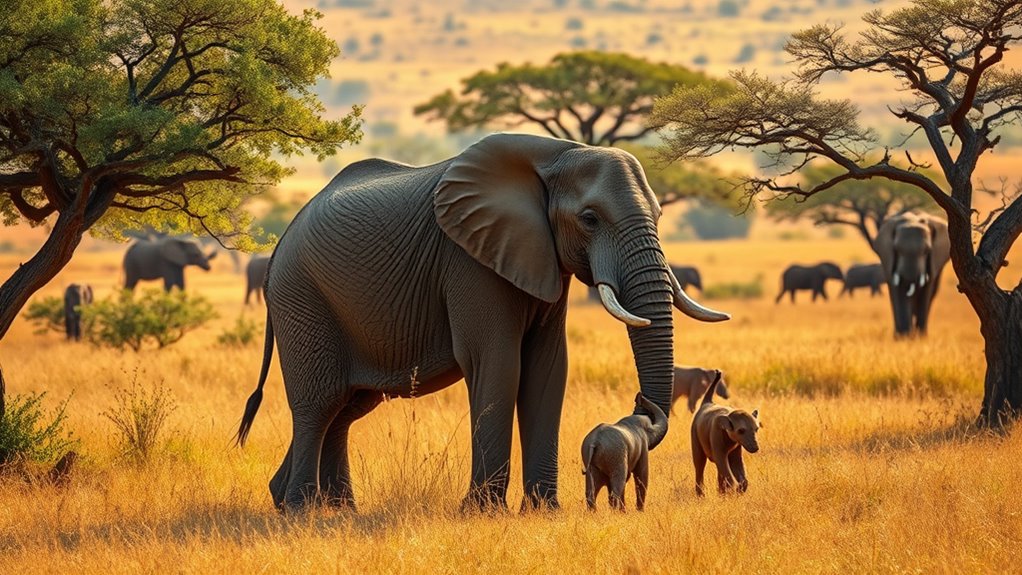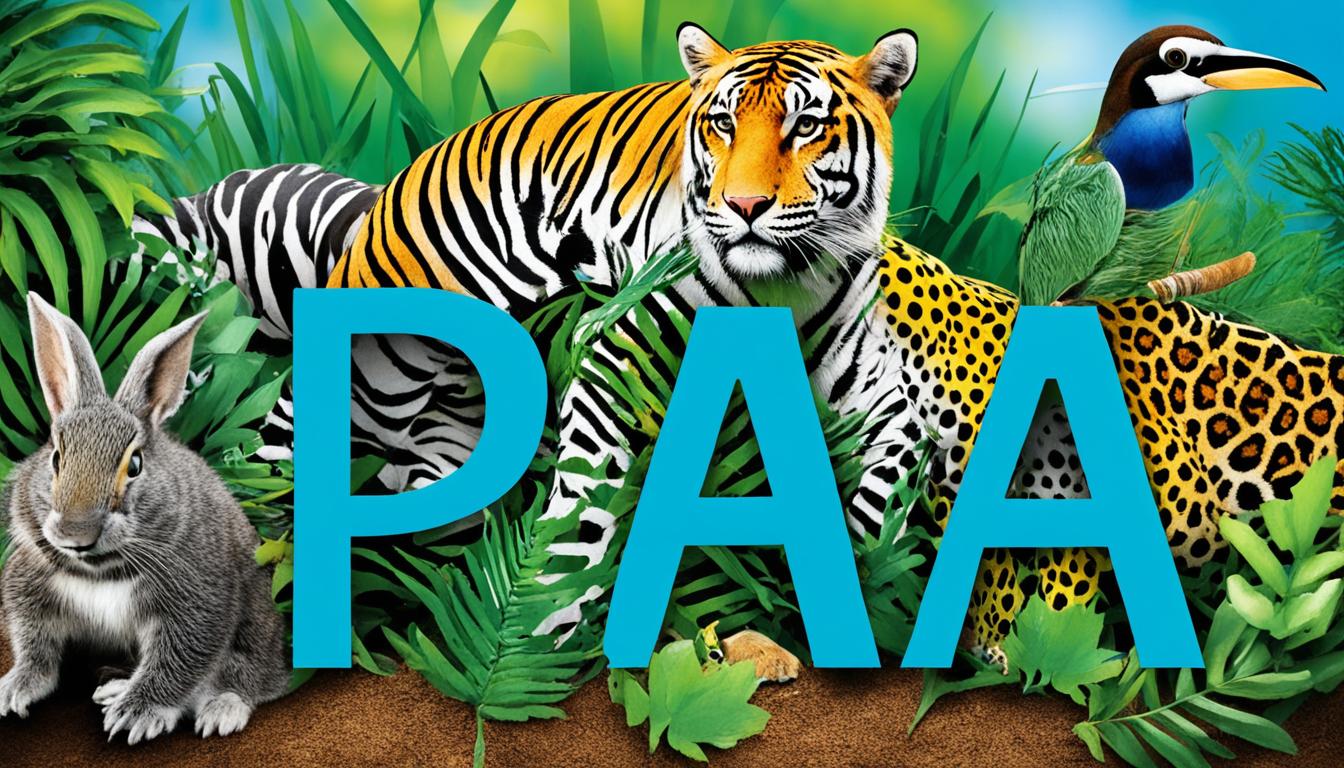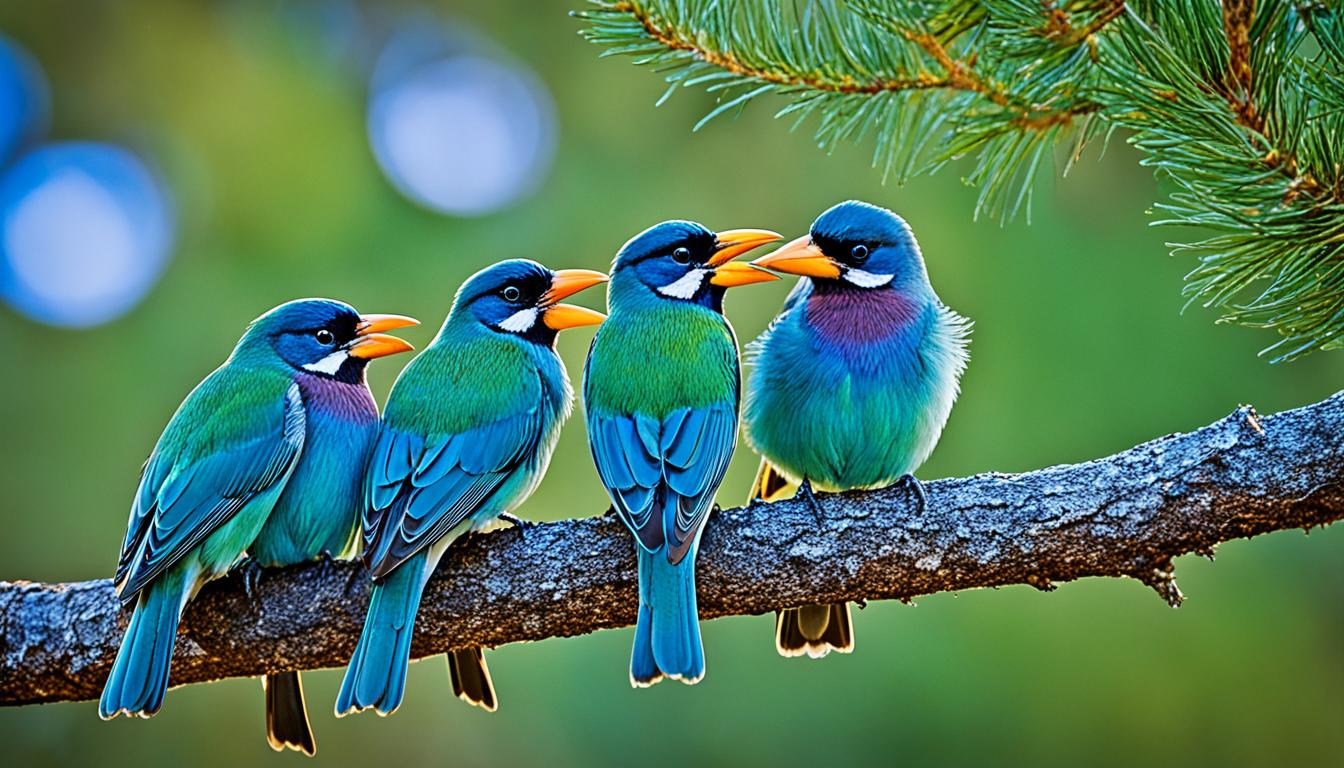The African elephant thrives in diverse habitats like savannas and coastal zones, helping to shape landscapes and support biodiversity. They primarily eat grasses, leaves, and fruits, consuming up to 300 pounds daily, which aids in seed dispersal. Living in matriarchal herds, these elephants form strong family bonds. The oldest female leads, fostering cooperation in raising calves. The elephant’s cultural and ecological importance underscores the need for conservation efforts. Stick with us to discover even more fascinating facts!
Key Takeaways
- African elephants inhabit diverse ecosystems, including savannas, forests, and coastal zones, adapting to various environments for survival.
- Their diet primarily consists of grasses, leaves, fruits, and bark, allowing them to consume up to 300 pounds of food daily.
- Elephants live in matriarchal herds led by the oldest female, fostering strong social bonds and cooperative parenting among females.
- Communication among elephants involves vocalizations, body language, and infrasound, highlighting their complex social interactions and emotional connections.
- Conservation efforts are crucial to protect elephants from threats like poaching and habitat loss, ensuring their ecological and cultural significance is preserved.

The African elephant is one of the most magnificent creatures on our planet, known for its impressive size and intelligence. These gentle giants inhabit a variety of ecosystems, from savannas to forests, showcasing their adaptability. As you delve deeper into their world, you’ll discover how their habitat plays a vital role in their survival and the broader environment. Elephants are key players in maintaining the balance of their ecosystems, helping to shape the landscape by uprooting trees and creating water holes that benefit other wildlife. Coastal zones, like beaches, where they may travel to find water sources, also demonstrate their adaptability to different environments.
Their diet consists primarily of grasses, leaves, fruits, and bark, which they consume in large quantities. As a matter of fact, an adult elephant can eat up to 300 pounds of food in a single day! This feeding behavior not only sustains them but also supports the biodiversity of their habitat. By dispersing seeds through their dung, elephants contribute greatly to the growth of various plant species, fostering a thriving ecosystem.
Conservation efforts for African elephants are vital, especially given the threats they face from poaching and habitat loss. Many organizations and governments are working tirelessly to protect these iconic animals, recognizing their cultural significance and ecological importance. Elephants hold a special place in the hearts of many communities across Africa. They’re often seen as symbols of strength and wisdom, featuring in folklore, art, and traditions. By understanding their importance, you can appreciate the urgency of conservation efforts and the need for sustainable practices to guarantee their survival.
Family life is another fascinating aspect of African elephants. They live in matriarchal herds led by the oldest and often largest female. This structure fosters strong bonds among members, with females supporting one another through the challenges of raising calves. When you observe a herd, you’ll notice how they communicate through vocalizations, body language, and even infrasound, allowing them to stay connected over long distances. The nurturing nature of elephants is remarkable; they display empathy and protectiveness, demonstrating that family ties are essential for their social structure.
As you continue to explore the world of African elephants, remember that your awareness and support for conservation efforts can make a difference. By advocating for their protection, you’re helping preserve not just a species but the rich tapestry of life they are intricately woven into.
Frequently Asked Questions
How Long Do African Elephants Typically Live in the Wild?
Wild elephants typically live around 60 to 70 years, showcasing impressive elephant lifespan and wild elephant longevity. You might find it fascinating that their lifespan can be influenced by factors like habitat, food availability, and threats from poaching. In protected areas, they often reach the upper end of this range, while in harsher conditions, their life expectancy might decrease. So, understanding their environment is key to ensuring they thrive throughout their lives.
What Threats Do African Elephants Face Today?
African elephants face significant threats today, primarily from poaching and habitat loss. You’ll find that poachers target them for their ivory, leading to declining populations. Additionally, as human development expands, their natural habitats shrink, making it harder for them to find food and water. These challenges not only threaten their survival but also disrupt their social structures. If we don’t address these issues, the future of elephants looks bleak.
Are African Elephants Solitary or Social Animals?
African elephants are social animals, thriving in herds that illustrate complex elephant social structures. You’ll notice their strong family bonds and cooperative behavior, as matriarchs lead groups of related females and their young. Herd dynamics are vital for nurturing and protecting calves, while adult males often leave their natal herds to join bachelor groups. This social interaction not only fosters community but also enhances survival skills within their environments.
How Do African Elephants Communicate With Each Other?
African elephants communicate like a symphony of thunder, using a range of vocalizations and body language. You’ll notice they make low rumbles that carry over long distances, helping maintain social bonding within their herds. These vocalizations aren’t just noise; they convey emotions and alerts about danger. Whether through trumpeting or gentle touches, every interaction strengthens their relationships, showcasing the deep connections they share in their complex social structures.
What Conservation Efforts Are in Place for African Elephants?
Conservation efforts for African elephants focus on combating poaching and restoring their habitats. You’ll find initiatives that strengthen anti-poaching laws and support local communities in sustainable practices. Habitat restoration projects are also underway, helping to create safe corridors for elephants to roam. By involving local populations and raising awareness, these efforts aim to reduce poaching’s impact while ensuring elephants have the space they need to thrive in the wild.
Conclusion
In understanding the African elephant, you realize it’s not just a majestic creature but a essential thread in the fabric of its ecosystem. Their complex family structures and diverse diets remind us that every species plays a role in maintaining balance. As you reflect on their habitat and social bonds, consider: if we don’t protect these giants, what will become of the wilderness they once roamed freely? The fate of the African elephant echoes our own stewardship of the planet.










